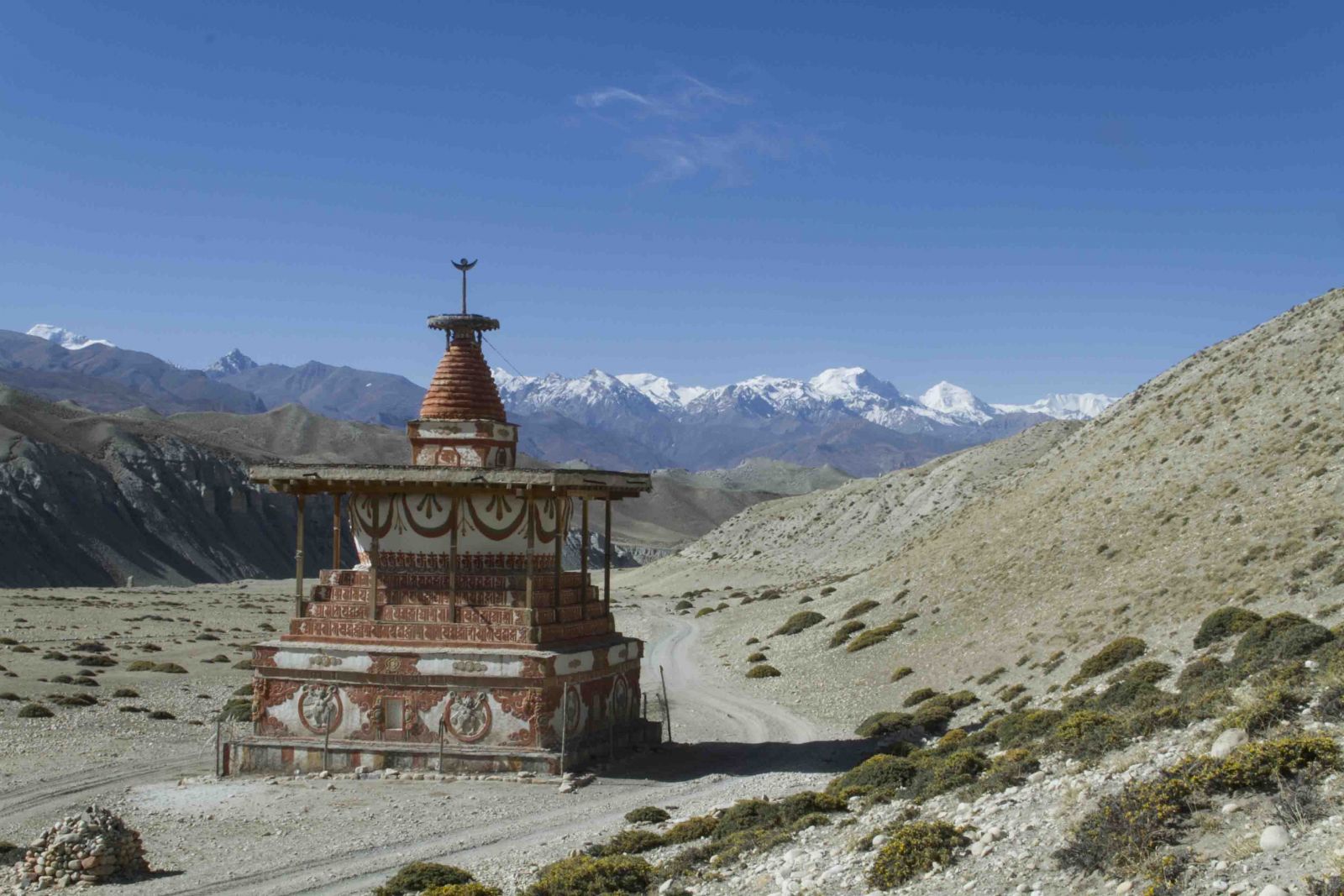
A Journey to Salvation
We had our breakfast in 'Yak Donald's', Nepal's answer to McDonald's, and saw the early morning sun kissing the cold hard mountain as she started to dazzle like gold.
When I watched 'Paths of the soul', a movie about Tibetan pilgrims on a grueling 1,200-mile pilgrimage to Lhasa, I had realized the staggering devotion required in a pilgrimage. However, my trip to Muktinath was more of an adventure on a four-wheeler, so I didn't experience any of that, but watching the determination of some of the pilgrims was awe-inspiring. After two hours of driving on the rough, bouncy road, we finally reached our destination. Many buses were lined up around the area, but there were some pilgrims who had walked along the Kali Gandaki gorge, traversing the vast landscape of Mustang, not fearing landslides or the slippery road. There were Buddhist monks chanting "Om Mani Padme Hum", counting the prayer beads on their hands, there were also Hindu pilgrims chanting Rudri, a religious hymn. Accompanying them were women who wrapped sarees around their heads and faces to protect themselves from the cold wind, and their children who were playing with black shells they believed to be shaligram.
More than 300 million people go on pilgrimage each year, as per United Nations World Tourism Organization. Jerusalem, Mecca, and Rome are some of the major pilgrimage sites in the world. Muktinath is one such unique pilgrimage that lies in the high Himalaya, and is revered by both Hindus and Buddhists. It is a Vishnu temple in north-central Nepal at the foot of the Thorung La pass. Hindus call it ‘Mukti Kshetra’ , field of salvation,Buddhists call it 'Chumig Gyatsa', the hundred waters, after the 108 water spouts in the temple.
A three- tiered, Newari pagoda-style structure, it is pre-dominantly a Vaishnava shrine, but Shaivites also regard it as a significant pilgrimage destination like Kedarnath, Badrinath, and Amarnath. For Mahayana Buddhists, the central image of Vishnu is known as Lokesvara, ‘the god who has chosen a human form". For Tibetan Buddhists, Muktinath is special because Padmasambhava, the sage who introduced Buddhism to Tibet for the first time, visited it around the eighth century. Many of his followers come to Muktinath, all the way from China's Tibetan Autonomous Region (Xizang)
In the absence of proper roadway and transportation in the past, one can imagine the difficulties the pilgrims might have faced attempting to reach the upper valley of Kali Gandaki—harsh cold weather, physical fatigue, and many other hazards on the old trail. People take the pilgrimage for various reasons; to remember the dead, atone for their sins, and pray for the well-being of their loved ones. Taking a shower under the 108 water spouts is a key part of the pilgrimage. They are made in the shape of boars' heads, the boar representing one of the 10 avatars of Lord Vishnu.
Another important temple in the area is the temple of Jwala Mai, where one can see burning natural gas fire. Hindus believe Lord Brahma set the fire on the water, whereas Tibetan Buddhists call it Salame- bar Dolamebar Gompa (the temple of the miraculous fire). The local Thakali shopkeepers selling flowers I met also said that there was a singing shrine nearby, where one could hear "water-like music played by the gods"
Some people trek to the area in the hope of collecting shaligrams, the fossilized shells considered to be representation of the god Vishnu himself, and which are used to worship him. They are usually found on the banks of the Gandaki River, and their origin can be traced back to 150 million years, much before the formation of the Himalaya. They are sold in the market in the form of key rings and souvenirs.
The pilgrims visit several shrines and religious sites on the way to Muktinath, and use various trails to get there. Some hike directly from Jomsom to Muktinath, which takes around six hours, while others prefer hiking from Jomsom to Kagbeni, the point where the Jhong River meets the Kali Gandaki, and then to Muktinath, which takes around twelve hours. Kagbeni is where many pilgrims perform shraddha, (ritual performed to remember loved ones who have passed away) and offer pinda (food offered to one's ancestors as part of funerary rites).
A day earlier, I and six of my friends hiked to Kagbeni from Marpha. We had our breakfast in 'Yak Donald's', Nepal's answer to McDonald's, and saw the early morning sun kissing the cold hard mountain as she started to dazzle like gold. One can reach Muktinath from Kagbeni by following the road. After the climb to Khingar, one has to continue walking to Jharkot, and then to the ACAP center. Muktinath is twenty minutes away from the center.
The region is not only popular for pilgrimage, but also for trekkers. On my way down, I met some trekkers from Australia who were heading east, to Thorung La pass, which leads to Manang, the eastern half of the Annapurna Circuit. Although crossing the pass from Muktinath to Manang is considered trickier than crossing from the other direction, many trekkers prefer it.
I did discover my own kind of salvation in the place, surrounded by the gorgeous looking mountains and beautiful Thakali people. Culture and beliefs were woven into every facet of life in Mustang. I could only sit and admire the beautiful spirit and quite determination of the people I met. After immersing myself into the magic of Muktinath, I returned to my hotel in Marpha, a place named after the famous apple wine of the same name. I was exhausted and thirsty, but I put aside the glass of Marpha, because only another trip to the mountains could quench my thirst.











